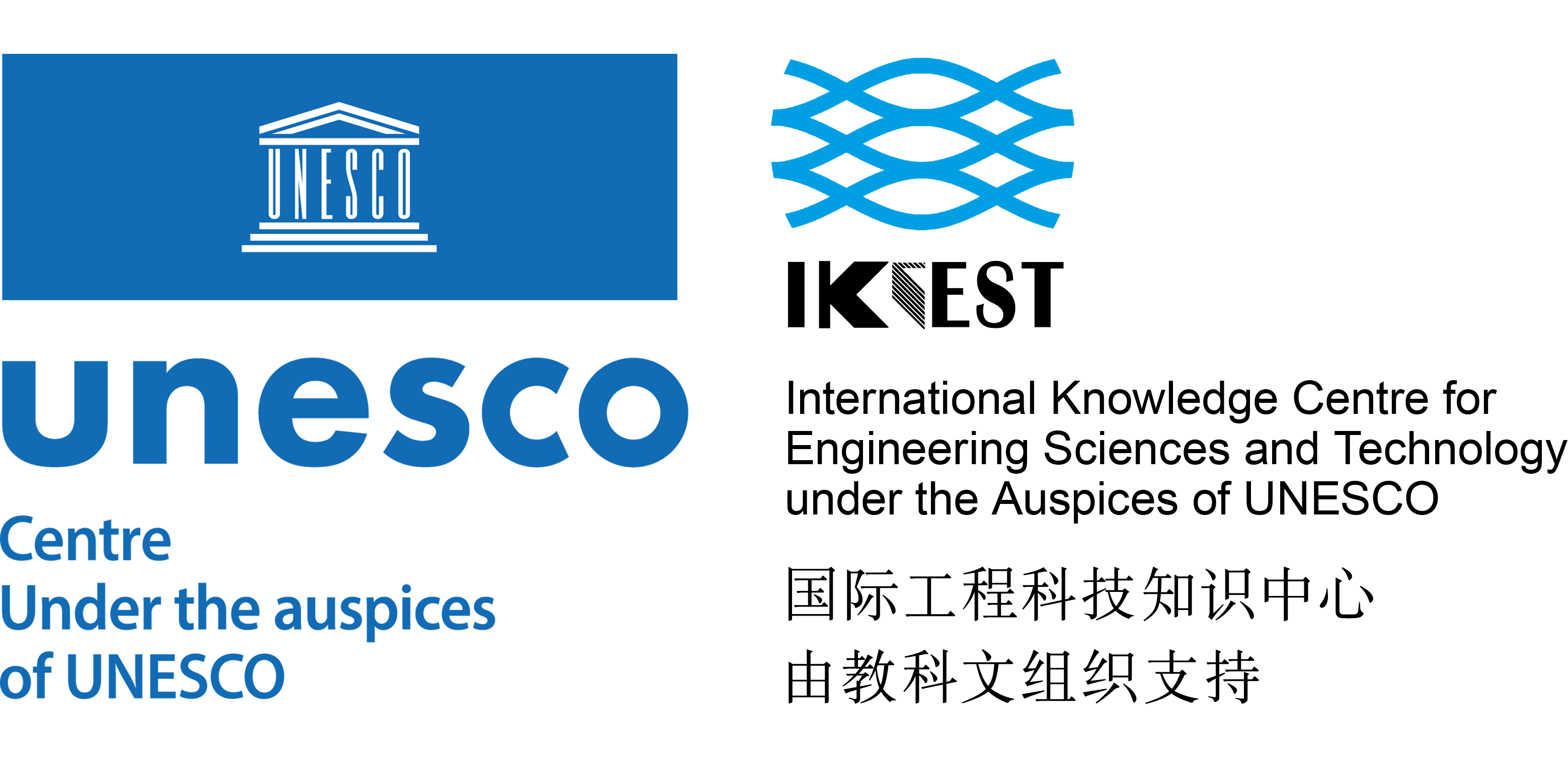Journal
Please choose volume & issue:
-
Robust Matrix Factorization via Minimum Weighted Error Entropy Criterion
Keywords:EntropyOptimizationLaplace equationsData modelsRobustnessGaussian noiseDistributed databasesInformation-theoretic learning (ITL)noise of social datarobustness of social systemssurveillance video modelingAbstracts:Learning the intrinsic low-dimensional subspace from high-dimensional data is a key step for many social systems of artificial intelligence. In practical scenarios, the observed data are usually corrupted by many types of noise, which brings a great challenge for social systems to analyze data. As a commonly utilized subspace learning technique, robust low-rank matrix factorization (LRMF) focuses on recovering the underlying subspaces in a noisy environment. However, most of the existing approaches simply assume that the noise contaminating the data is independent identically distributed (i.i.d.), such as Gaussian and Laplacian noises. This assumption, though greatly simplifies the underlying learning problem, may not hold for more complex non-i.i.d. noise widely existed in social systems. In this work, we suggest a robust LRMF approach to deal with various types of noise in a unified manner. Different from traditional algorithms, noise in our framework is modeled using an independent and piecewise identically distributed (i.p.i.d.) source, which employs a collection of distributions, instead of a single one to characterize the statistical behavior of the underlying noise. Assisted by the generic noise model, we then design a robust LRMF algorithm under the information-theoretic learning (ITL) framework through a new minimization criterion. By adopting the half-quadratic optimization paradigm, we further deliver an optimization strategy for our proposed method. Experimental results on both synthetic and real data are provided to demonstrate the superiority of our proposed scheme.
-
Sparse Pinball Twin Bounded Support Vector Clustering
Keywords:Support vector machinesClustering algorithmsStatic VAr compensatorsClustering methodsMachine learning algorithmsKernelStability analysisClusteringconcave convex procedure (CCCP)machine learningsupport vector machines (SVMs)Abstracts:Analyzing unlabeled data is of prime importance in machine learning. Creating groups and identifying an underlying clustering principle is essential to many fields, such as biomedical analysis and market research. Novel unsupervised machine learning algorithms, also called clustering algorithms, are developed and utilized for this task. Inspired by twin support vector machine (TWSVM) principles, a recently introduced plane-based clustering algorithm, the twin bounded support vector clustering (TBSVC), is used in widespread clustering problems. However, TBSVC is sensitive to noise and suffers from low resampling stability due to usage of hinge loss. Pinball loss is another type of loss function that is less sensitive toward noise in the datasets and is more stable for resampling of datasets. However, the use of pinball loss negatively affects the sparsity of the solution of the problem. In this article, we present a novel plane-based clustering method, the sparse TBSVC using pinball loss (pinSTBSVC). The proposed pinSTBSVC is the sparse version of our recently proposed TBSVC using pinball loss (pinTBSVC). Sparse solutions help create better-generalized solutions to clustering problems; hence, we attempt to use the ε-insensitive pinball loss function to propose pinSTBSVC. The loss function used to propose pinSTBSVC provides sparsity to the solution of the problem and improves the aforementioned plane-based clustering algorithms. Experimental results performed on benchmark University of California, Irvine (UCI) datasets indicate that the proposed method outperforms other existing plane-based clustering algorithms. Additionally, we also give the application of our method in biomedical image clustering and marketing science. We show that the proposed method is more accurate on real-world datasets too. The code for the proposed algorithm is also provided on the author's Github page: https://github.com/mtanveer1.
-
Exploiting User Preferences for Multiscenarios in Query-Less Search
Keywords:Behavioral sciencesUrban areasFeature extractionSearch problemsSystems architectureNeural networksVideo on demandAttention mechanismfeature interactionintention predictionneural networksonline travel planningAbstracts:Online travel platforms (OTPs), for example, booking.com, Ctrip.com, and Fliggy, deliver travel experiences to online users by providing travel-related products. Hotel recommendation is significantly important for OTPs since hotel bookings account for almost half of the travel expenses and hotel products generate more than half of OTP’s revenues. More than 58% Fliggy users may choose to use query-less hotel searches to find candidate hotels, where no additional keywords are given except the expected check-in date and travel destination city. Thus, how to recommend hotels to traveler users is important and challenging. In this article, we explore the unique characteristics of query-less hotel users and propose a novel multiscenario query-less search network (MSQS). According to their searching date, expected check-in date, current city, and expected hotel city, MSQS groups users’ behaviors (e.g., click, purchase, search) into four scenario groups, namely today-local, today-nonlocal, future-local, and future-nonlocal. The key components of MSQS are the global expert, the scenario expert, and the feedback expert. The global expert learns common features among different scenarios and extracts the feature interactions between context, users, and hotels. The scenario expert utilizes multilayer perception to learn the differentiating features between scenarios. The feedback expert learns users’ preferences for hotels in different scenarios through their historical behaviors, and a scenario interest extractor is carefully designed to enhance attention across scenarios and behaviors. An offline experiment on the Fliggy production dataset with over 8 million users and 0.49 million travel items and an online A/B test both show that MSQS effectively predicts users’ hotel booking intentions.
-
A Cognitive Similarity-Based Measure to Enhance the Performance of Collaborative Filtering-Based Recommendation System
Keywords:CollaborationWeight measurementInternetDeep learningComputational modelingSystem performancePolymersCognitive similarity (CgS)collaborative filtering (CF)cosine measureGower’s coefficientJaccard coefficientrecommendation system (RS)sigmoid functionsimilarity measureAbstracts:Advances in technology and high Internet penetration are leading to a large number of businesses going online. As a result, there is a substantial increase in the number of customers making online purchases and the number of items available online. However, with so many options available to choose from, users have to face the information overload problem. Several techniques have been developed to handle this, but the performance of the recommendation system (RS) has been recorded unprecedentedly. The collaborative filtering (CF) of RS is the most prevalent technique, which suggests personalized items to users based on their past preferences. The efficacy of this technique mainly depends on the similarity calculation, which the traditional or cognitive approach can ascertain. In the traditional approach, a similarity measure utilizes the user’s ratings on an item to compute the similarity. Most similarity measures in this approach suffer from either data sparsity and/or cold-start problems. To address both of them, a new similarity measure based on the Jaccard and Gower coefficients, the efficient Gowers–Jaccard–Sigmoid Measure (EGJSM), is proposed in this article. It also includes a nonlinear sigmoid function to penalize the bad ratings. The performance of EGJSM is evaluated by conducting experiments on benchmark datasets, and the results depict that the proposed technique outperforms several existing methods. Along with this, a cognitive similarity (CgS) measure has been proposed, which considers cognitive features such as genre and year of release along with rating information, to calculate similarity. The CgS method also outperforms the proposed EGJSM method and produces almost 4% and 1% lower mean absolute error (MAE) and root-mean-squared error (RMSE) values than that.
-
SaTYa: Trusted Bi-LSTM-Based Fake News Classification Scheme for Smart Community
Keywords:Fake newsSocial networking (online)Data modelsDistributed ledgerStakeholdersSemanticsSecurityBi-directional long short-term memory (Bi-LSTM)blockchain (BC)deep learning (DL)fake news identificationAbstracts:This article proposes a SaTya scheme that leverages a blockchain (BC)-based deep learning (DL)-assisted classifier model that forms a trusted chronology in fake news classification. The news collected from newspapers, social handles, and e-mails are web-scrapped, prepossessed, and sent to a proposed Q-global vector for word representations (Q-GloVe) model that captures the fine-grained linguistic semantics in the data. Based on the Q-GloVe output, the data are trained through a proposed bi-directional long short-term memory (Bi-LSTM) model, and the news is classified as real-or-fake news. This reduces the vanishing gradient problem, which optimizes the weights of the model and reduces bias. Once the news is classified, it is stored as a transaction, and the news stakeholders can execute smart contracts (SCs) and trace the news origin. However, only verified trusted news sources are added to the BC network, ensuring credibility in the system. For security evaluation, we propose the associated cost of the Bi-LSTM classifier and propose vulnerability analysis through the smart check tool for potential vulnerabilities. The scheme is compared against discourse-structure analysis, linguistic natural language framework, and entity-based recognition for different performance metrics. The scheme achieves an accuracy of 99.55% compared to 93.62% against discourse structure analysis. Also, it shows an average improvement of 18.76% against other approaches, which indicates its viability against fake-classifier-based models.
-
Urban Region Profiling With Spatio-Temporal Graph Neural Networks
Keywords:CorrelationCognitive systemsTask analysisUrban areasRepresentation learningComputational modelingGraph neural networksCognitive computingcomputational social systems (CSSs)graph learningregion profilingspatio-temporal dataAbstracts:Region profiles are summaries of characteristics of urban regions. Region profiling is a process to discover the correlations between urban regions. The learned urban profiles can be used to represent and identify regions in supporting downstream tasks, e.g., region traffic status estimation. While some efforts have been made to model urban regions, representation learning with awareness of graph-structured data can improve the existing methods. To do this, we first construct an attribute spatio-temporal graph, in which a node represents a region, an edge represents mobility across regions, and a node attribute represents a region’s point of interest (PoI) distribution. The problem of region profiling is reformulated as a representation learning problem based on attribute spatio-temporal graphs. To solve this problem, we developed URGENT, a spatio-temporal graph learning framework. URGENT is made up of two modules. The graph convolutional neural network is used in the first module to learn spatial dependencies. The second module is an encoding–decoding temporal learning structure with self-attention mechanism. Furthermore, we use the learned representations of regions to estimate region traffic status. Experimental results demonstrate that URGENT outperforms major baselines in estimation accuracy under various settings and produces more meaningful results.
-
The Joint Method of Triple Attention and Novel Loss Function for Entity Relation Extraction in Small Data-Driven Computational Social Systems
Keywords:Feature extractionTask analysisPrototypesTraining dataData miningNeural networksComputational modelingAttention mechanismfew-shot learningprototypical networksquery instances and support setrelation extractionsocial data and intelligenceAbstracts:With the development of the social Internet of Things (IoT) and multimedia communications, our daily lives in computational social systems have become more convenient; for example, we can share shopping experiences and ask questions of people in an ad hoc network. Relation extraction focuses on supervised learning with adequate training data, and it helps to understand the knowledge behind the observed information. However, if only some social data in an unknown area can be used, how to obtain the related knowledge and information is a key topic for supporting social intelligence. This article proposes the joint method of triple attention and novel loss function for entity relation extraction by few-shot learning in computational social systems. We consider using a prototypical network as the base model to acquire support set prototypes and to compare queries with the prototypes for classification. First, triple attention is employed to make the query instances and support set share interactive information in a global and instancewise manner, highlighting the important features. Second, we combine a weighted Euclidean distance function with a multilayer perceptron (MLP) to perform class matching, which maps the generated features to their proper classifications, emphasizing the prominent dimensions in the feature space and relieving data sparsity. Third, triplet loss and uniformity regularization are used to solve the inconsistency problem faced by the support set, where the features of the support set in the same class are often far apart in different characteristic dimensions. Finally, the experimental results demonstrate the improved performance of our model on the FewRel dataset.
-
Self-Learning Spatial Distribution-Based Intrusion Detection for Industrial Cyber-Physical Systems
Keywords:Intrusion detectionFeature extractionInternetSecurityGraphical modelsDistribution functionsHidden Markov modelsBetween-class learning (BC learning)cognitive computingcyber-physical systems (CPSs)intrusion detectionmachine learning (ML)Abstracts:Thanks to the great advancement of cognitive computing, artificial intelligence, big data, and the Internet of Things (IoT) technologies, the fusion of the physical and virtual worlds is changing people’s lifestyles. Although the research and deployment of cyber-physical systems (CPSs) are notably promoted by cognitive computing, the reliability and large-scale application of CPSs are still significantly challenged by some security issues. Therefore, it is meaningful to clarify and address the weaknesses of current intrusion detection methods for CPSs and enhance the ability to identify, analyze, and predict to improve the performance of intrusion detection. In this article, we first propose a novel self-learning spatial distribution algorithm, named Euclidean distance-based between-class learning (EBC learning), which improves between-class learning by calculating the Euclidean distance (ED) among <inline-formula> <tex-math notation="LaTeX">$k$ </tex-math></inline-formula>-nearest neighbors of different classes. In addition, a cognitive computing-based intrusion detection method named border-line SMOTE and EBC learning based on random forest (BSBC-RF) is also proposed based on the EBC learning for industrial CPSs. The experimental results over a real industrial traffic dataset show that the proposed EBC learning has strong spatial constraint capability and can improve the prediction and recognition performance. Compared with the eight state-of-the-art methods, the proposed method has an ACC exceeding 99.5%, false alarm rate (FAR) less than 0.06%, and <inline-formula> <tex-math notation="LaTeX">$F1$ </tex-math></inline-formula> close to 0.99, which is still superior to other ones.
-
Cognitive Indoor Positioning Using Sparse Visible Light Source
Keywords:Light emitting diodesAzimuthLight sourcesCamerasReceiversMathematical modelsMeasurement unitsCognitive computinginertial measurement unit (IMU)unscented particle filter (UPF)visible light positioningAbstracts:Big data and cognitive computing have a wide range of applications in smart homes, smart cities, artificial intelligence, and computational social systems. Visible light positioning systems have attracted more and more attention as one of the application scenarios of computational social systems. In visible light positioning systems, the light-emitting diodes (LEDs) ceiling layout makes the smartphone usually obtain less than three LEDs in captured images. Due to the lack of necessary positioning information, most scholars combine the inertial measurement unit (IMU) with the modified filter algorithms to achieve positioning under the sparse light source. However, these systems have the following problems: 1) the azimuth angle obtained by the IMU is always not accurate, which decreases the positioning accuracy and 2) during the dynamic positioning process, the system’s initial position is difficult to automatically determine. In this article, we propose indoor high-precision visible light positioning under the sparse light source. First, we propose the geometric correction mechanism, which uses ellipse fitting to calibrate the azimuth angle, so as to increase the positioning accuracy for the static system. Then, we build a motion model for the entire positioning process through the unscented particle filter (UPF), which does not need to manually set initial state parameters, due to random generated particles. It can increase the positioning accuracy for the dynamic system. We evaluate our designed system, and the experimental results show that the average azimuth angle error is 2.04° and average positioning error is 8.8 cm, under the sparse light source.
-
A Multitarget Interested Region Extraction Method for Wrist X-Ray Images Based on Optimized AlexNet and Two-Class Combined Model
Keywords:BonesX-ray imagingWristFeature extractionStandardsShapeDeep learningDeep learninghigh precisionmultitargetregion of interest (ROI)X-ray imagesAbstracts:Bone age assessment based on X-ray Images can accurately determine the actual bone age of adolescents. Accurate extraction of the key regions of interest (ROIs) in X-ray images is required to accurately assess bone age. However, existing ROI extraction methods can only extract a few targets and have poor extraction accuracy. Thus, the strict demands for imaging in the medical field via these methods are difficult. In this article, we propose a multitarget interested region extraction method for wrist X-ray images based on optimized AlexNet and two-class combined model, named OATC, which can simultaneously extract multiple ROIs with high accuracy. Specifically, the square-wave scanning algorithm was implemented to obtain the bounding box size of each bone ROI according to the shape information of the wrist. Then, the optimized AlexNet was used to obtain the key point coordinates of each bone ROI. Bone ROIs could be extracted by combining key point coordinates with the bone bounding box size. Finally, the two-classification model was combined to improve the accuracy of ROI extraction. Experiments conducted on our wrist X-ray image dataset showed that OTAC has a fast convergence speed and small deviation. The average accuracy of extracting 14 ROIs reached 95.57%, which are 7.76% and 4.68% higher than that of VGG16 and AlexNet, respectively.
Hot Journals
- Risk Breakdown Matrix for Risk-Based Inspection of Transportation Infrastructure Projects
- Social Control in Outsourced Architectural and Engineering Design Consulting Projects: Behavioral Consequences and Motivational Mechanism
- 2022 Best Paper Award
- Hold-Ups and Failures in Negotiated Order: Unearthing the Nuances of Rework Causation in Construction
- Prevalence and Risk Factors for Poor Mental Health and Suicidal Ideation in the Nigerian Construction Industry
- CFRP–Cable-Stayed Bridge Hybrid with Partial Suspension and a Span Exceeding 3,000 m: Concept, Optimization, and Construction
- Impact of Wind Load Characteristics on Computed Bridge Stay-Cable Forces Used for Bridge Health Monitoring
- Weak-End and Frequency Detection of Elastically Supported Bridges by Contact Residual Response of Two-Axle Test Vehicle in a Round Trip
- Development of Performance-Based Fragility Curves of Coastal Bridges Subjected to Extreme Wave-Induced Loads
- An Analytical Model to Evaluate Short- and Long-Term Performances of Post-Tensioned Concrete Box-Girder Bridges Rehabilitated by an Ultrahigh-Performance Concrete Overlay
- Three-Dimensional Velocity Distribution in Straight Smooth Channels Modeled by Modified Log-Law
- Experimental Investigation on Flow Past Two and Three Side-by-Side Inclined Cylinders
- An Experimental Investigation of Rotor–Box Aerodynamic Interaction 1
- Modeling Gas–Liquid Flow Between Rotating and Nonrotating Annular Disks
- Entry Length Requirements for Two- and Three-Dimensional Laminar Couette–Poiseuille Flows
Advanced Materials (3,745)
- Structured Perovskite Light Absorbers for Efficient and Stable Photovoltaics
- Strategies for High‐Performance Solid‐State Triplet–Triplet‐Annihilation‐Based Photon Upconversion
- Atomic Engineering Catalyzed MnO2 Electrolysis Kinetics for a Hybrid Aqueous Battery with High Power and Energy Density
- Crystal Adaptronics: Global Performance Indices for Dynamic Crystals as Organic Thermal Actuators (Adv. Mater. 20/2020)
- Enlightening Materials with Photoswitches
Acta Astronautica (1,768)
- Mixed-integer trajectory optimization with no-fly zone constraints for a hypersonic vehicle
- Adaptive control design for active Pogo suppression of large strap-on liquid launch vehicles
- Machine learning based approach for modeling and forecasting of GPS–TEC during diverse solar phase periods
- Effect of two-dimensional micro-cavity surface on hypersonic boundary layer
- Investigation on burning behaviors of aluminum agglomerates in solid rocket motor with detailed combustion model








 User Center
User Center My Training Class
My Training Class Feedback
Feedback





